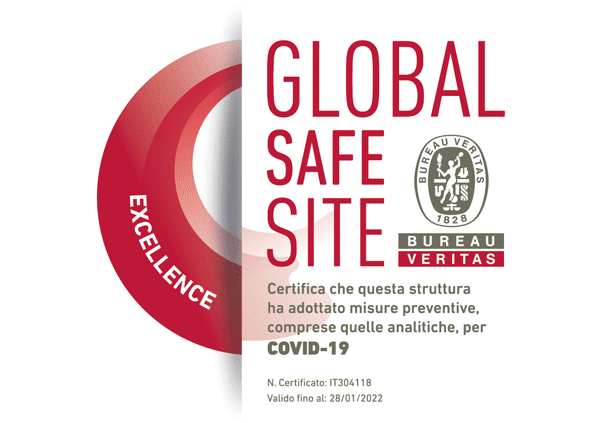The dry eye syndrome
Millions of people worldwide suffer from dry eye syndrome. This condition can be caused by high levels of pollution, excessive use of air conditioning, the use of contact lenses, the widespread use of PCs, tablets and smartphones, and is destined to increase in the future.
Tears or lachrymal fluid have an important function: they wash, disinfect and lubricate the surface of the eye, creating a barrier against aggressive agents of the environment. If the production, circulation and composition of this fluid is not normal, the eye may be unable to see correctly.
The Dry Eye Syndrome, also known as lacrimal keratoconjunctivitis, is the name given to a reduction in the eye’s natural tear production.
As with all functions of every living organism, with tears, there is the perfect equilibrium between production and reabsorption, maintaining the right amount of liquid to keep the surface of the eye moist.
If production is reduced, the eye will be dry, sight will be poor and the eye will suffer.
Irritation may result because of frequent continuous eye movements (blinking); there are also additional risks involved as the eye will be exposed to infection due to the absence of precious bacteriocidic agents.
The main symptoms are:
- Constant sense of irritation;
- Sensation of sand in the eye;
- Redness of the conjunctiva;
- Burning sensation.
These disorders will increase in dry or windy conditions or when there is air-conditioning.
Hyperevaporation
Sometimes, it can happen that patients with Dry Eye Syndrome suffer from excessive weeping, particularly when there is minor damage to the surface of the eye.
However, the fluids produced are not ‘normal’ tears. These are very watery, they contain very few mucous components and they are unable to lubricate the eye properly; they flow away and evaporate rapidly and easily from the eye, leaving its surface exposed to aggression from external agents. This condition is called Syndrome of Hyperevaporation and the condition is observed when people continually use a computer, as their focused attention and their concentration on the monitor delay the blinking frequency, leading to the excessive evaporation of the lachrymal liquid.
The main causes of dry eye
Dry eye may have the following origins:
- Congenital: the patient suffers from this condition from birth;
- Acquired: the condition is provoked by external factors, such as the excessive and continuous use of contact lenses, or it may appear at a later stage following eye surgery;
- Involutive: the condition is linked to ageing.
In the case of Dry Eye Syndrome, patients are advised not to use contact lenses as they necessitate adequate tear production to keep the eye moist. If this is lacking and the lens is not properly lubricated, it will stick to the eye and this can cause lesions and serious damage to the surface of the eye.
However, if tear production is reduced but not insufficient, the patient can use contact lenses in conjunction with artificial tears, to keep the eye moistened at optimal levels. However, it is always advisable to request the opinion of a specialist eye doctor.
Treatment of dry eye
At the time of writing, there are no drugs or therapies available to stabilize the reduced production of tears.
Artificial tears are normally prescribed, also known as lachrymal integrators; these are eye drops containing deterging, lubricating and disinfecting agents, and are similar to natural tears: as these do not contain any drug properties, they can be purchased OTC (over the counter, without a medical prescription); more importantly, they can be used as required and for extended periods of time with no risks for the patient’s eye. In cases of severe dryness, the drops may need to be applied to the eye every hour or every half-hour depending on the needs or the patient may opt to use artificial tears with greater density.
If the condition persists at night, before going to bed, the patient should apply an oily gel to his/her eye.
If this is not sufficient and there are potential risks of damage to the cornea (dry keratoconjunctivitis), the patient can apply special protective contact lenses; alternately, the eye doctor may suggest occlusion of the tear ducts with tiny reabsorbable plastic plugs, to reduce the drainage of the few tears present.
These ducts can also be permanently closed with a minor surgical procedure.
Some advice
Generally speaking, Dry Eye Syndrome can be prevented or the symptoms and irritation can at least be reduced.
Patients should take note of the following advice:
- Avoid environments that are smoke-filled, that are dusty or those with chemical vapors;
- Limit or avoid applying make-up to the eyelids;
- Use face creams with caution, and avoid that they come into contact with the eyes;
- With windy conditions or in the presence of strong sunshine or light, protect the eyes with spectacles;
- Drink at least two liters of water every day;
- Keep humidity levels at optimal levels in the rooms where the patient spends most time for personal or professional reasons,;
- Blink frequently, particularly when prolonged periods are spent in front of the computer.


